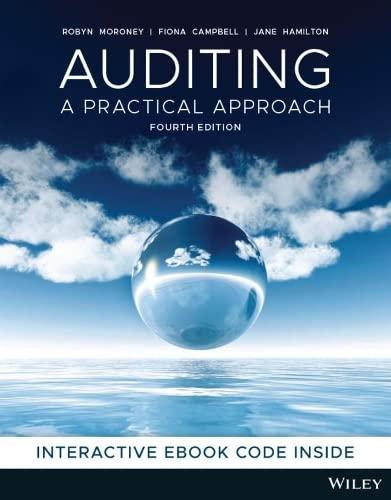Question
The comparative balance sheet of Orange Angel Enterprises Inc. at December 31, 20Y8 and 20Y7, is as follows: Dec. 31, 20Y8 Dec. 31, 20Y7 Assets
The comparative balance sheet of Orange Angel Enterprises Inc. at December 31, 20Y8 and 20Y7, is as follows:
| Dec. 31, 20Y8 | Dec. 31, 20Y7 | ||||
| Assets | |||||
| Cash | $58,680 | $72,210 | |||
| Accounts receivable (net) | 90,170 | 97,350 | |||
| Merchandise inventory | 128,810 | 120,670 | |||
| Prepaid expenses | 5,250 | 3,660 | |||
| Equipment | 262,400 | 216,180 | |||
| Accumulated depreciation-equipment | (68,220) | (53,020) | |||
| Total assets | $477,090 | $457,050 | |||
| Liabilities and Stockholders' Equity | |||||
| Accounts payable (merchandise creditors) | $100,190 | $95,520 | |||
| Mortgage note payable | 0 | 137,120 | |||
| Common stock, $1 par | 16,000 | 10,000 | |||
| Excess of paid-in capital over par | 231,000 | 129,000 | |||
| Retained earnings | 129,900 | 85,410 | |||
| Total liabilities and stockholders equity | $477,090 | $457,050 | |||
Additional data obtained from the income statement and from an examination of the accounts in the ledger for 20Y8 are as follows:
Net income, $113,890.
Depreciation reported on the income statement, $33,140.
Equipment was purchased at a cost of $64,160, and fully depreciated equipment costing $17,940 was discarded, with no salvage realized.
The mortgage note payable was not due for six years, but the terms permitted earlier payment without penalty.
6,000 shares of common stock were issued at $18 for cash.
Cash dividends declared and paid, $69,400.
Required:
Prepare a statement of cash flows, using the indirect method of presenting cash flows from (used for) operating activities. Use the minus sign to indicate cash outflows, cash payments, decreases in cash, or any negative adjustments.
| Cash flows from (used for) operating activities: | blank | |
| Common stockDepreciation expenseInventoryNet incomeRetained earnings | $- Select - | |
| Adjustments to reconcile net income to net cash flows from (used for) operating activities: | blank | |
| Cash dividendsDecrease in accounts receivableDepreciationNet incomeRetained earnings | - Select - | |
| Changes in current operating assets and liabilities: | blank | |
| Decrease in accounts payableDecrease in accounts receivableDecrease in inventoryDepreciationIncrease in accounts receivable | - Select - | |
| Decrease in accounts payableDecrease in merchandise inventoryDecrease in prepaid expensesIncrease in accounts receivableIncrease in merchandise inventory | - Select - | |
| Decrease in accounts payableDecrease in inventoryDecrease in prepaid expensesIncrease in prepaid expensesDepreciation | - Select - | |
| Decrease in accounts payableDecrease in prepaid expensesDepreciationIncrease in accounts payableNet income | - Select - | |
| Net cash flows from operating activities | blank | $fill in the blank 13 |
| Cash flows from (used for) investing activities: | blank | |
| Cash received from issuing common stockCash paid for equipmentCash dividendsCash paid for prepaid expensesCash paid to retire mortgage note | $- Select - | |
| Net cash flows used for investing activities | blank | fill in the blank 16 |
| Cash flows from (used for) financing activities: | blank | |
| Cash received from customersCash received from depreciationCash received from net incomeCash received from retained earningsCash received from issuing common stock | $- Select - | |
| Cash paid for accounts payableCash dividendsCash paid for equipmentCash paid for inventoryCash paid for prepaid expenses | - Select - | |
| Cash paid for accounts payableCash paid for accumulated depreciationCash paid for depreciationCash paid for inventoriesCash paid to retire mortgage note payable | - Select - | |
| Net cash flows from financing activities | blank | fill in the blank 23 |
| DepreciationNet decrease in cashNet incomeNet increase in cashNet loss | blank | $- Select - |
| Cash balance, January 1, 20Y8 | blank | fill in the blank 26 |
| Cash balance, December 31, 20Y8 |
Step by Step Solution
There are 3 Steps involved in it
Step: 1

Get Instant Access to Expert-Tailored Solutions
See step-by-step solutions with expert insights and AI powered tools for academic success
Step: 2

Step: 3

Ace Your Homework with AI
Get the answers you need in no time with our AI-driven, step-by-step assistance
Get Started


